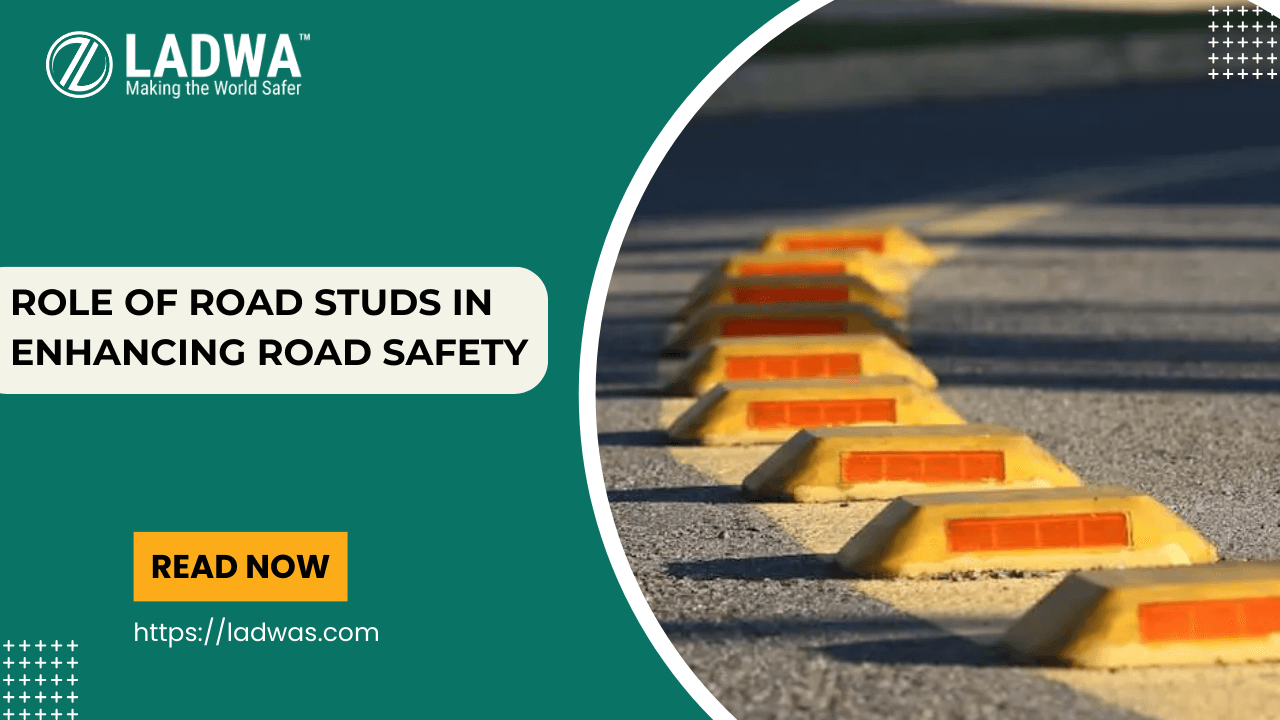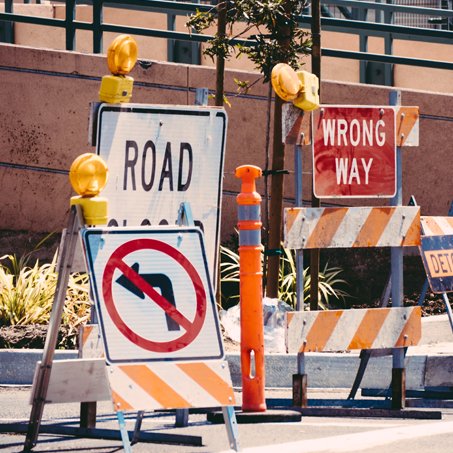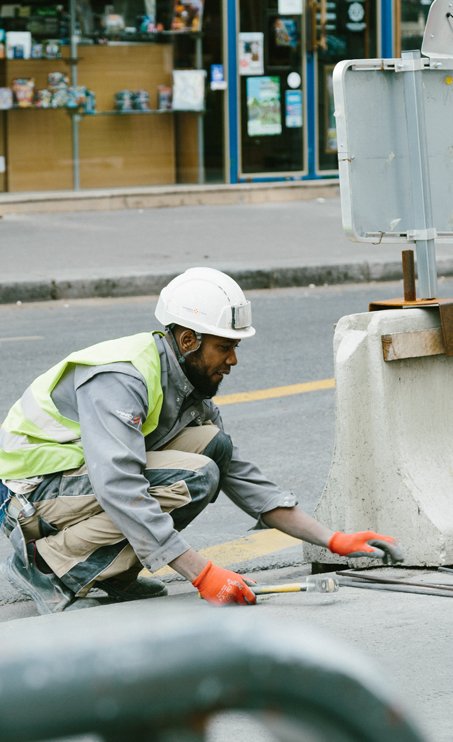Road studs, commonly known as cat’s eyes, are essential components of road safety infrastructure. These small, reflective devices are strategically placed along roads to improve visibility and guide drivers, especially in low-light conditions or adverse weather. This blog post will delve into how road studs enhance road safety, the different types of road studs, how road reflectors work, and the maintenance required for road studs.
How Road Studs Improve Road Safety
1. Increased Visibility
Road studs significantly enhance visibility on roads by reflecting light from vehicle headlights. This is particularly beneficial at night or during poor weather conditions such as fog, rain, or snow. The reflective properties of road studs make road markings more visible, helping drivers stay within their lanes and navigate curves and intersections more safely.
2. Lane Delineation
One of the primary functions of road studs is to clearly mark the edges of lanes. This helps prevent lane drifting and head-on collisions, especially on winding roads and in areas with poor lighting. By providing a clear visual guide, road studs help drivers maintain their lane position, reducing the risk of accidents.
3. Speed Management
Road studs also play a role in managing vehicle speeds. By marking lanes and road edges, they help drivers gauge their speed and adjust accordingly, particularly in areas where sudden changes in road alignment occur. This can be crucial in preventing accidents caused by excessive speed.
4. Hazard Indication
Different colors of road studs can indicate various types of hazards. For example, red studs can mark the left edge of the road, while amber studs can mark the central reservation of a dual carriageway. This color-coding system helps drivers quickly identify potential hazards and take appropriate action.
5. Guidance in Adverse Conditions
In adverse weather conditions such as fog, rain, or snow, road studs provide continuous guidance when road markings might be obscured. This helps drivers maintain their course and reduces the risk of accidents caused by poor visibility.
How Road Reflectors Work
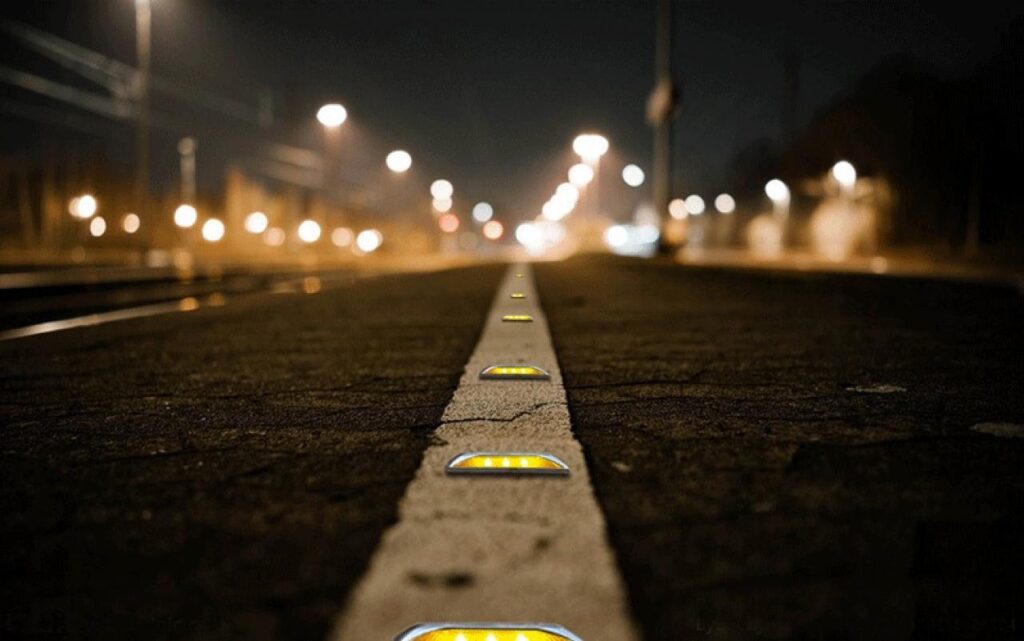
Road reflectors, or cat’s eyes, work on the principle of retroreflection. Retroreflection is the process by which light is directed back towards its source. In the case of road reflectors, this means that when a vehicle’s headlights shine on a road stud, the light is reflected back towards the driver’s eyes, making the stud visible even from a distance.
Components of Road Reflectors
- Reflective Surface: The top part of a cat eye contains a reflective lens made from materials like glass or plastic. This lens is designed to bounce back light towards its source.
- Vehicle Headlights: When a vehicle’s headlights beam onto a cat’s eye, the lens inside the reflector redirects this light back toward the driver.
- Improved Visibility: This redirected light makes the cat eyes appear bright and visible to the driver, helping them identify the road alignment and any potential hazards.
Different Types of Road Studs
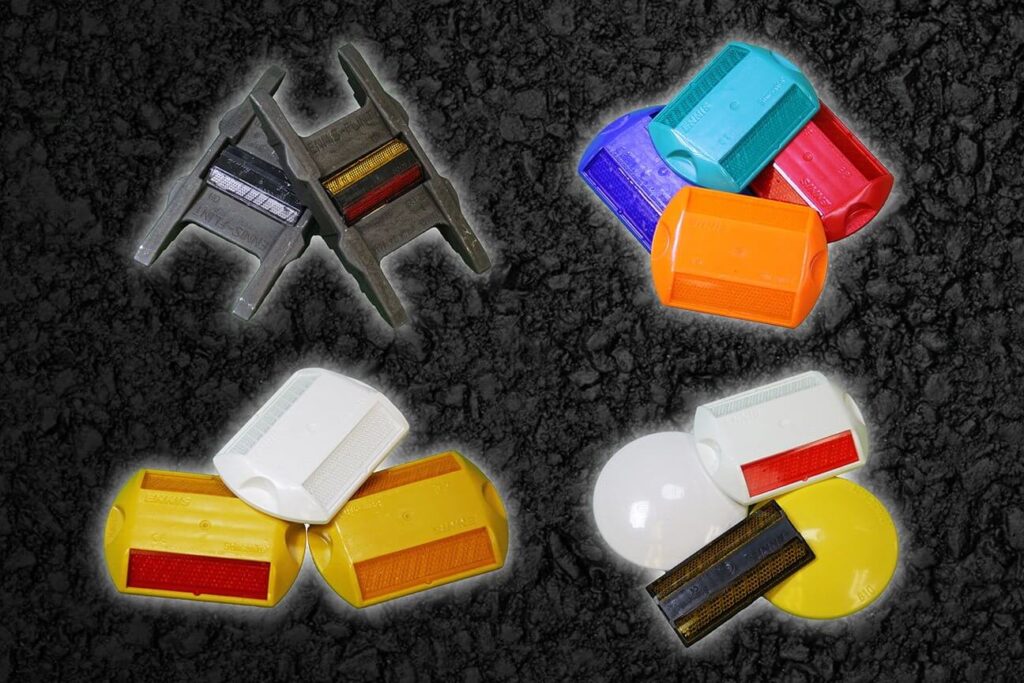
Road studs come in various types, each serving specific purposes and providing different benefits. Here are some common types:
1. Reflective Road Studs
Reflective road studs are designed to reflect vehicle headlights, making them visible to drivers from a distance. They are commonly used to mark the edges and center of the carriageway.
2. Non-Reflective Studs
Non-reflective studs are used on pedestrian crossings as a tactile demarcation for the visually impaired. They come with a plain top in stainless steel or a textured top in aluminum.
3. Solar Road Studs
Solar road studs are powered by the sun, making them a cost-effective and environmentally friendly solution for road safety. They provide a clear view of the road layout far beyond the reach of headlight beams, providing up to 900m of forward vision.
4. LED Road Studs
LED road studs have a solar panel on the top, which charges during the day and then emits light at night. These studs are environmentally friendly and cost-effective, providing enhanced visibility at night.
5. Aluminum Road Studs
Aluminum road studs are robust and long-lasting. They are commonly used in high-traffic areas and provide excellent visibility due to their reflective properties.
6. Ceramic Road Studs
Ceramic road studs consist of a ceramic or glass shell with a reflective material inside. These studs reflect headlights, making them visible to drivers from a distance. However, they can be less durable than some newer alternatives.
Maintenance of Reflective Road Studs
Proper maintenance of road studs is crucial to ensure their effectiveness and longevity. Here are some key aspects of road stud maintenance:
1. Regular Inspections
Regular inspections are necessary to check for any damage or wear and tear. This helps in identifying any studs that need replacement or repair.
2. Cleaning
Road studs should be kept clean to maintain their reflective properties. Dirt and debris can reduce their visibility, so regular cleaning is essential.
3. Replacement
Damaged or worn-out road studs should be replaced promptly to ensure continuous road safety. This includes replacing any studs that have lost their reflectivity or have been dislodged from the road surface.
4. Adhesive Bonding
The adhesive bond used for the installation of road studs must be of superior quality. The failure of road studs due to adhesive strength must be significantly lower than the failure of the studs themselves.
5. Seasonal Maintenance
Seasonal maintenance tasks are necessary to keep road studs in good condition during different weather conditions. This includes ensuring that road studs are not covered by snow or mud and that they remain visible throughout the year.
Conclusion
Road studs are a simple yet effective tool for improving road safety. Their use of reflective materials and strategic placement helps guide drivers and reduce accidents. By understanding the benefits, types, and maintenance of road studs, we can appreciate their crucial role in making our roads safer.

